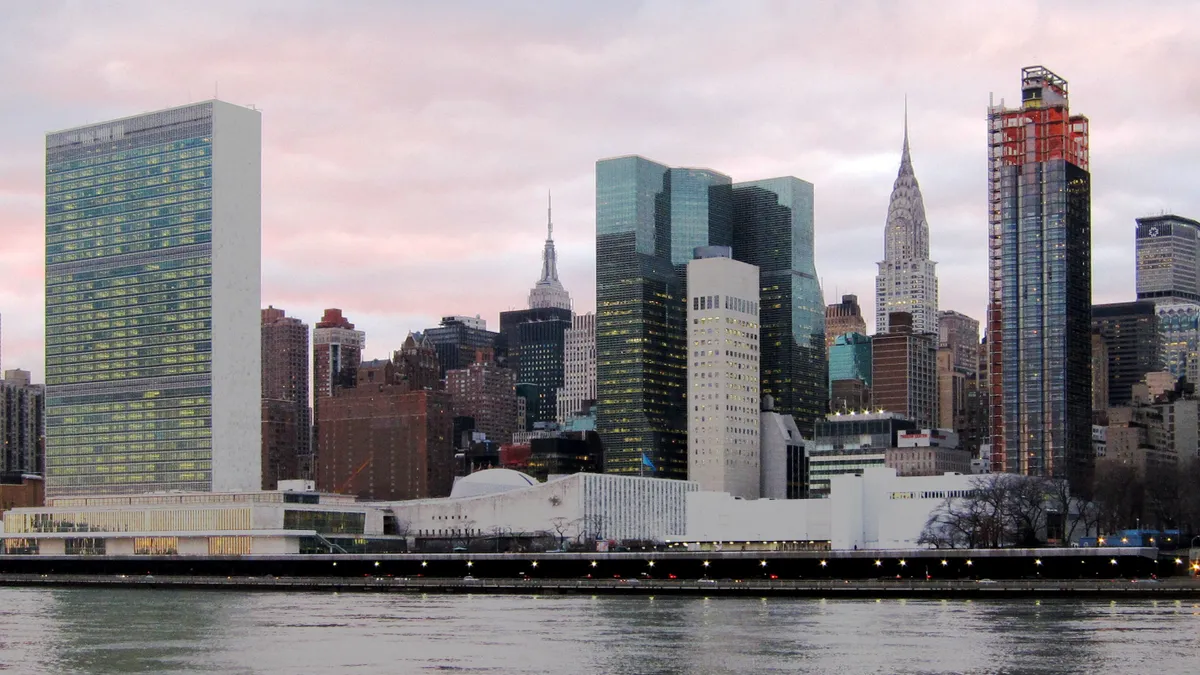Dive Brief:
-
The first academic building planned for the Cornell Tech campus on New York’s Roosevelt Island will get the energy needed to power its operations from nearby sources, according to Building Design + Construction.
-
Designed by Morphosis, the four-story building will feature solar arrays, geothermal heat pumps, a chilled-beam system and other features to reduce power consumption. The site include 80, 400-foot-deep closed-loop geothermal wells and a 40,000-gallon rainwater harvesting tank, the university said.
-
Slated for a September opening, the project is also aiming to achieve LEED Platinum certification. It includes 160,000 square feet of education space.
Dive Insight:
Net-zero energy buildings generate as much energy as they use — a model that’s gaining traction as green products and systems become more common. A report earlier this year from Navigant expects the North American net-zero energy market to increase 38.4% from 2014 to a value of $127 billion by 2035.
One reason for this growth, according to Navigant, is the prevalence of technology that helps buildings meet such stringent energy-consumption requirements. Those include chilled-beam systems, more and better insulation, energy-efficient facades and improved controls for monitoring daylight levels and space occupancy. All that, in turn, is helping to bring the related methods and systems into local and state building codes — another driver of continued adoption of net-zero construction.
As with many green building initiatives, government uptake drives early adoption. Late last year, the U.S. Department of Energy launched the Better Buildings Zero Energy Schools Accelerator to help generate examples of best practices for low-energy design affordable to school districts. The DOE projects that net-zero schools can consume 65% to 80% less energy than schools built using conventional construction methods.
Wilde Lake Middle School, in Columbia, MD, opened earlier this year as that state’s first net-zero energy school. The project used a $2.7 million grant from the Maryland Energy Administration. Its features include geothermal heat, photovoltaics and energy-efficient insulation as well as a data dashboard to help students understand how the building uses energy.













